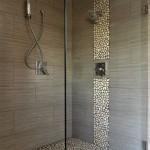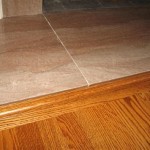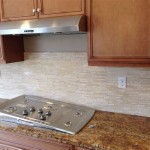Which Side of Cement Board Does Tile Go On?
Cement board, also known as backer board, is a crucial component in tile installations, providing a durable and stable substrate for the tiles to adhere to. A common question that arises for DIY enthusiasts and professional tile setters alike is: which side of the cement board should the tile be installed on? This seemingly simple question often leads to confusion, as both sides of the cement board appear similar. This article provides a comprehensive guide to understanding the correct side for tile installation and the reasons behind it.
Understanding Cement Board Construction
Cement board is typically made from a mixture of Portland cement, sand, and cellulose fibers. These components are pressed together and cured, resulting in a rigid and moisture-resistant board. The surface of the board is often textured, similar to drywall, but its construction differs significantly.
The key difference lies in the presence of a mesh layer embedded within the board. This mesh acts as a reinforcement, enhancing the board's structural integrity and preventing cracking. This mesh layer is integral to the board's ability to withstand the stresses of tile installation and the weight of the tiles.
The Correct Side for Tile Installation
The side of the cement board that should face the tiles is the side
without
the embedded mesh layer. This side typically has a smoother finish and a more consistent texture.There are several reasons why installing tiles on the smooth side of the cement board is crucial:
Firstly, the smooth side provides a better surface for the thinset mortar to adhere to. The thinset acts as the bonding agent between the tile and the cement board, and a smooth surface ensures a stronger bond.
Secondly, the embedded mesh layer on the opposite side of the board is designed to provide structural support. Installing tiles directly on the mesh would result in the tiles being uneven and potentially cracking. The mesh's purpose is to reinforce the board's internal structure, not to provide a surface for tile installation.
Thirdly, installing tiles on the smooth side ensures that the mortar can fully contact the board's surface. This maximizes the bonding area and strengthens the overall installation.
Additional Considerations
While the smooth side of the cement board should be used for tile installation, it's crucial to also consider the following points:
1.
Moisture Resistance:
Cement board is inherently moisture-resistant, but it's always a good practice to apply a waterproof membrane before installing the board. This ensures that any moisture seeping through the tile grout is contained and doesn't damage the underlying structure.2.
Proper Thinset Application:
Applying thinset mortar correctly is crucial for a successful tile installation. The thinset should be spread evenly and fully cover the back of the tile, ensuring good contact between the tile and the cement board.3.
Grout Selection:
The type of grout used should be compatible with the tile material and the intended use of the space. Consult a professional tile setter or a reputable tile supplier for advice on the best grout option for your specific project.
Easily Install Cement Board To Prep For Tile Installation

How To Install Cement Board The Home Depot

Easily Install Cement Board To Prep For Tile Installation

How To Install Cement Board The Home Depot

How To Install Cement Board For Tile Projects Diy Family Handyman

How To Install Cement Board On A Floor Diy Family Handyman

How To Install Hardiebacker Cement Board On Floors James Hardie Pros

Tile Installation Backer Board Around A Bathtub Family Handyman

How To Install Cement Backer Board For Floor Tile Installation The Home Depot

Tile Backerboard Material Options Fine Homebuilding
Related Posts








